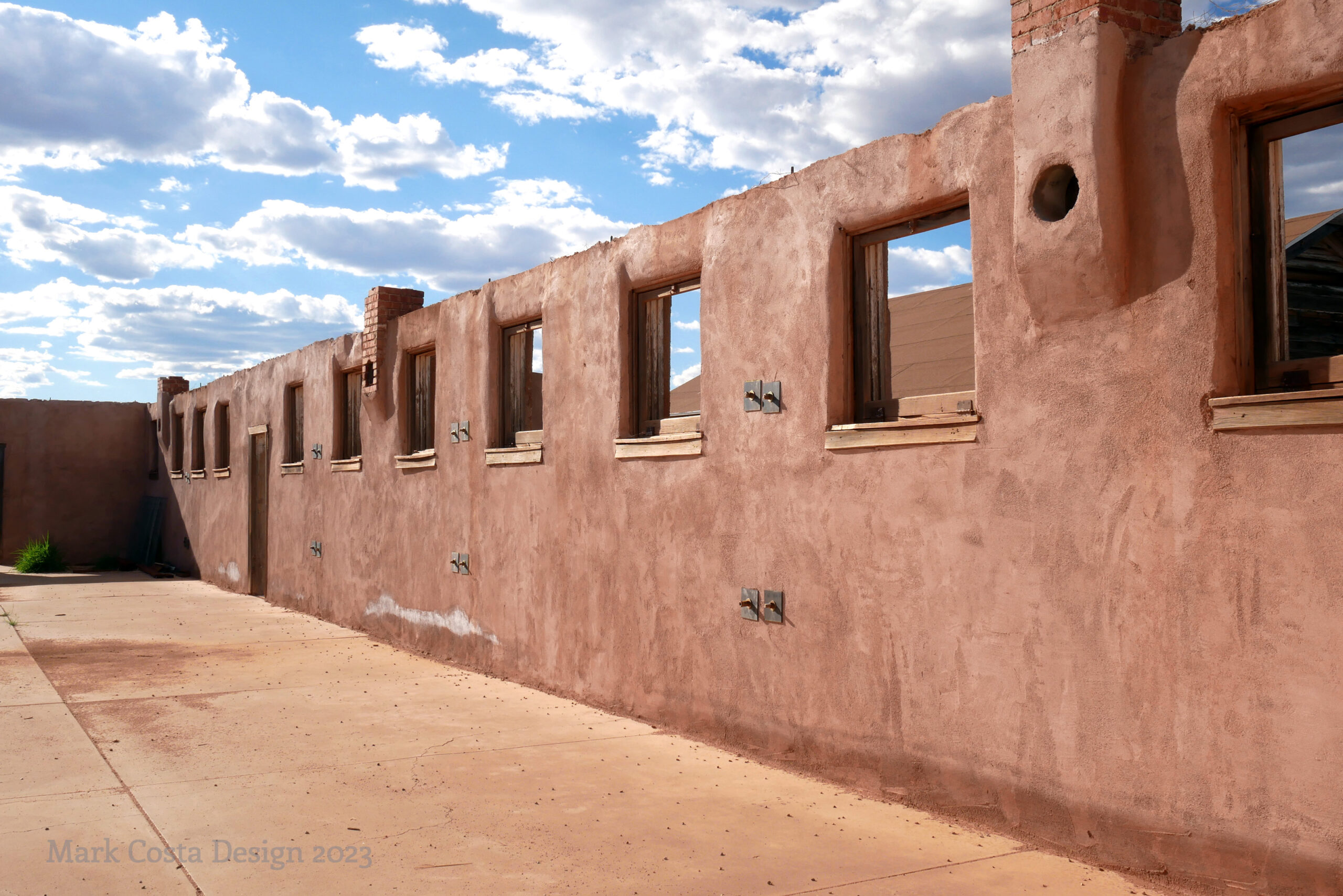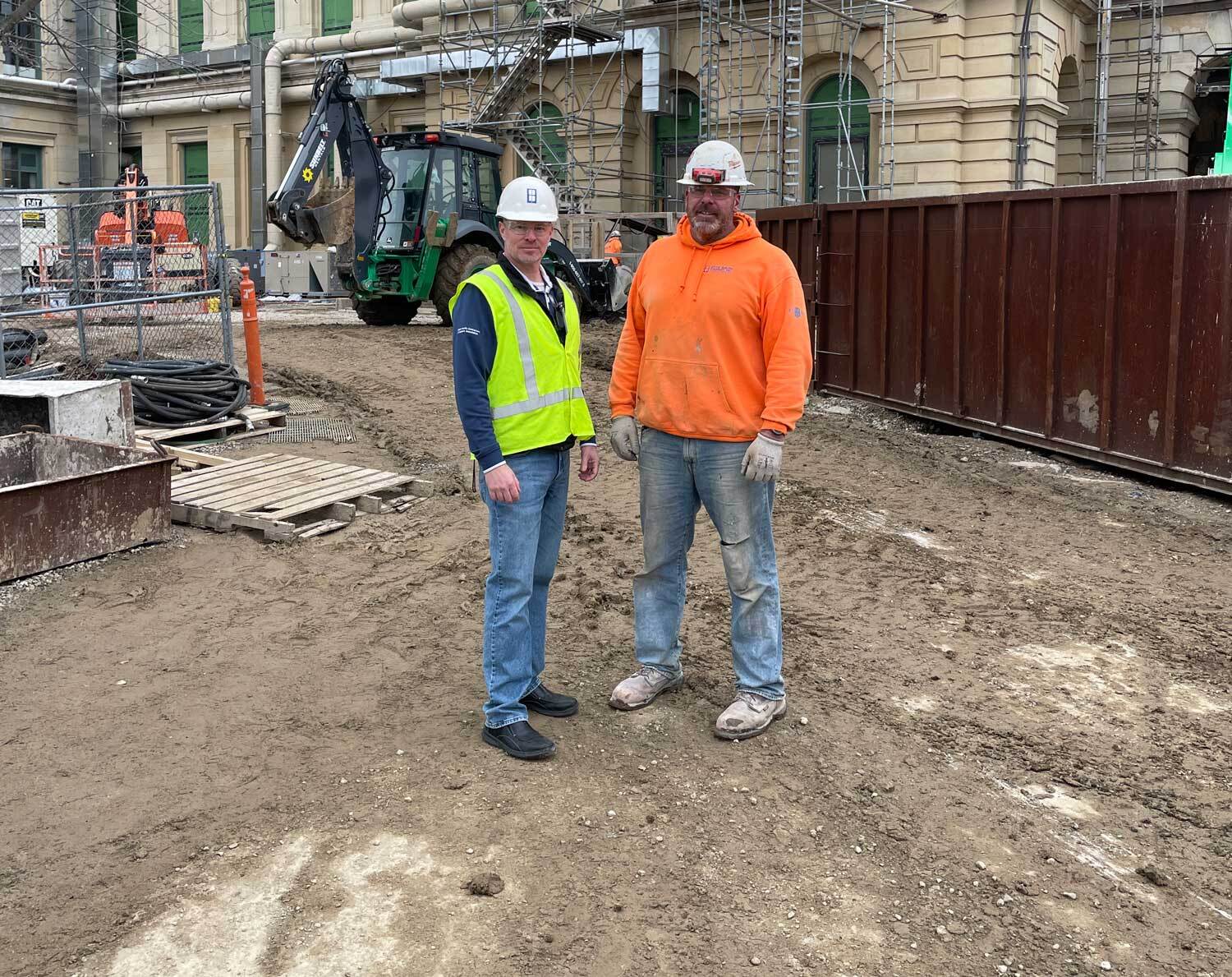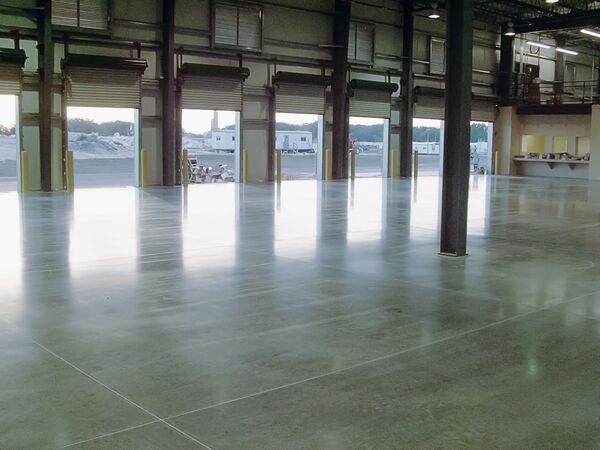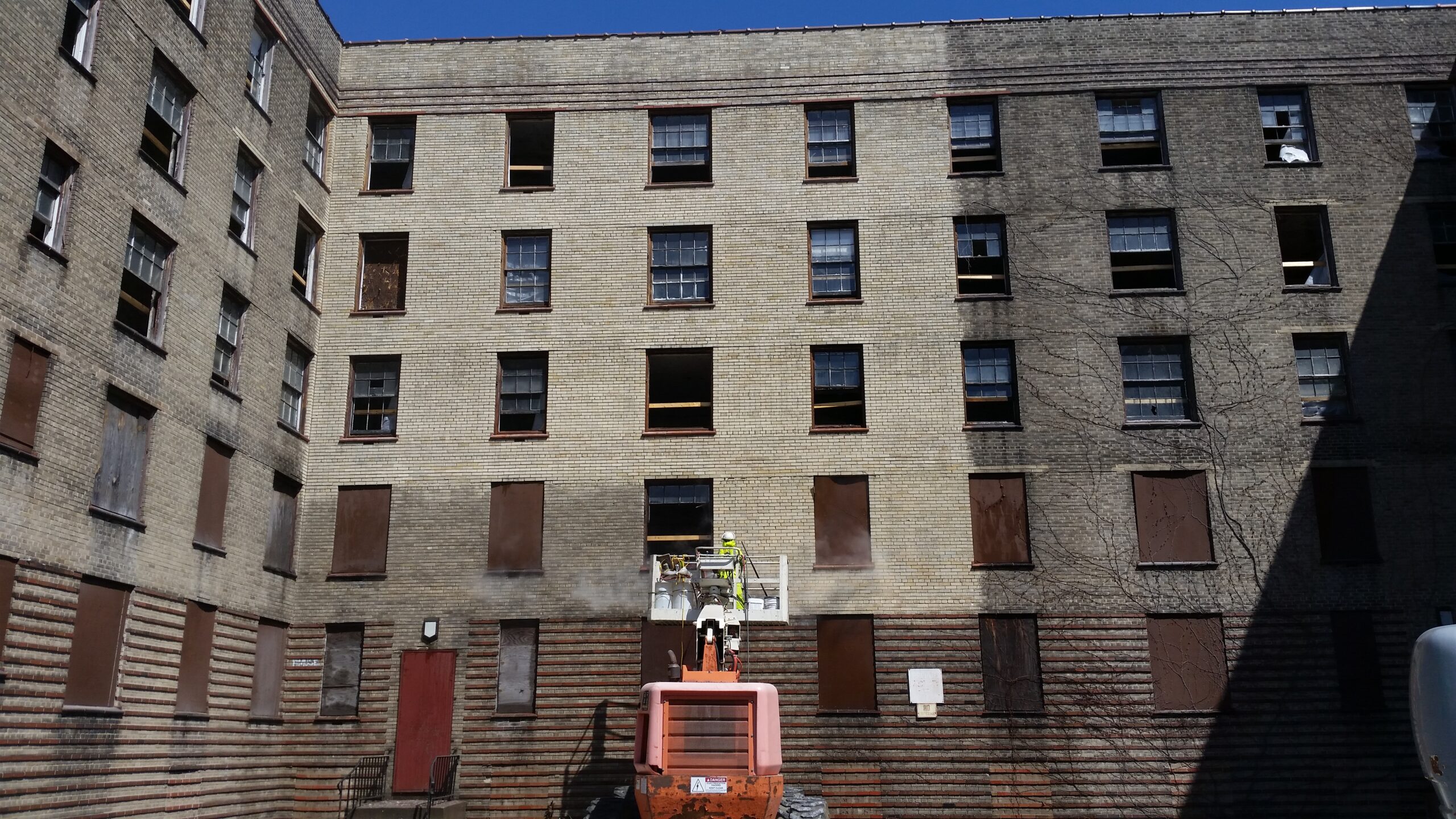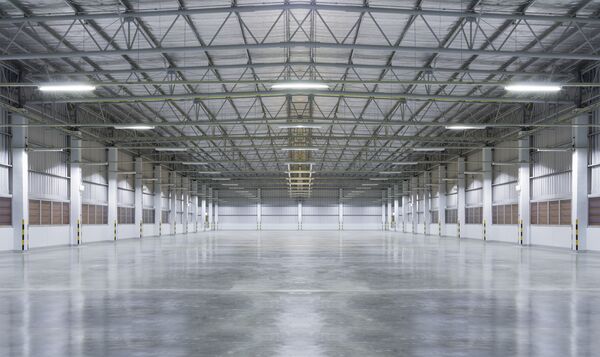A recent cleaning dramatically revealed the original colors of New York City’s most iconic bridge.
It may not be surprising that a structure as famous as the Brooklyn Bridge has its own paint color, or that the story of the paint color’s name is a legend of its own.
Some sources say an original pigment on the bridge contained an iron oxide mined from Rawlins, Wyoming, leading the bridge’s color to be called Rawlins Red.
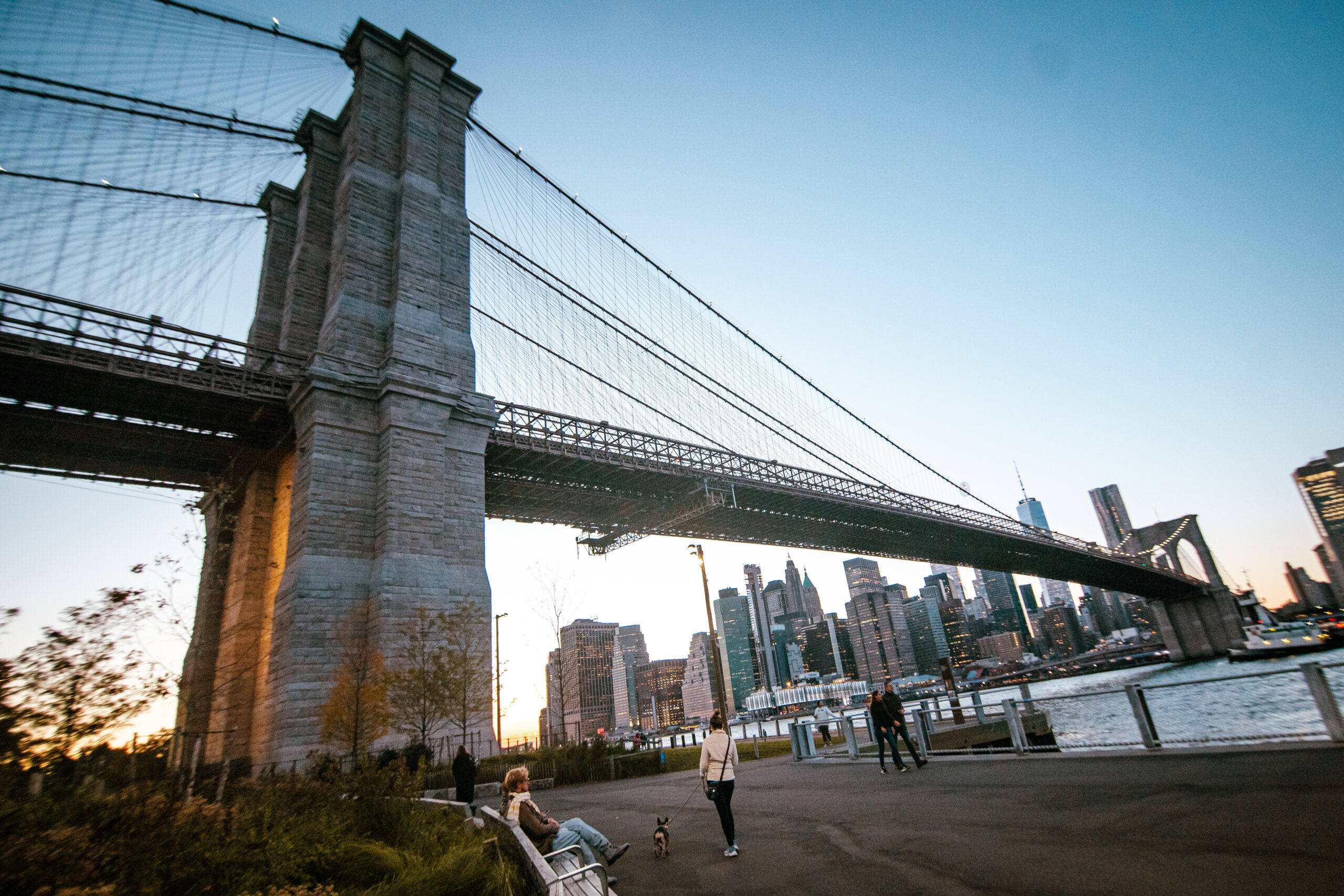
In 2010, the bridge was nearly painted a “Queensborough Tan,” a scandalous proposal considering the bridge does not connect to New York City’s Queens borough on either side, but rather connects Manhattan and Brooklyn.
Other sources point to the official color being “Brooklyn Bridge Tan,” a hue reportedly approved by the Landmarks Preservation Commission.
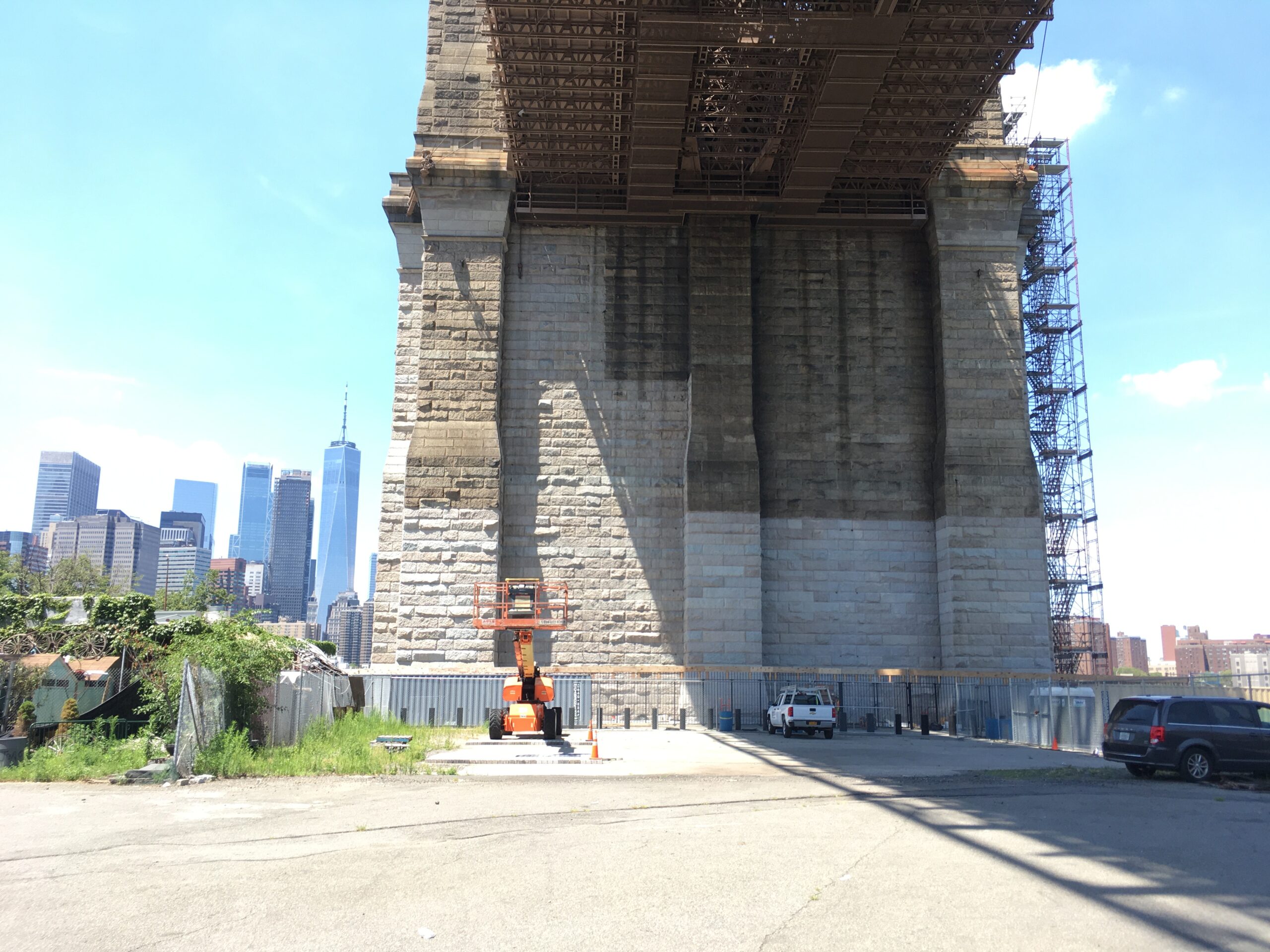
Either way, they may want to consider a name change, because the Brooklyn Bridge’s stone is no longer tan to match. Not after a $337 million project began in 2019 to strengthen the masonry towers and repair historic brick and granite – an enormous project that included enough product to clean approximately 560,000 square feet of various types of masonry.
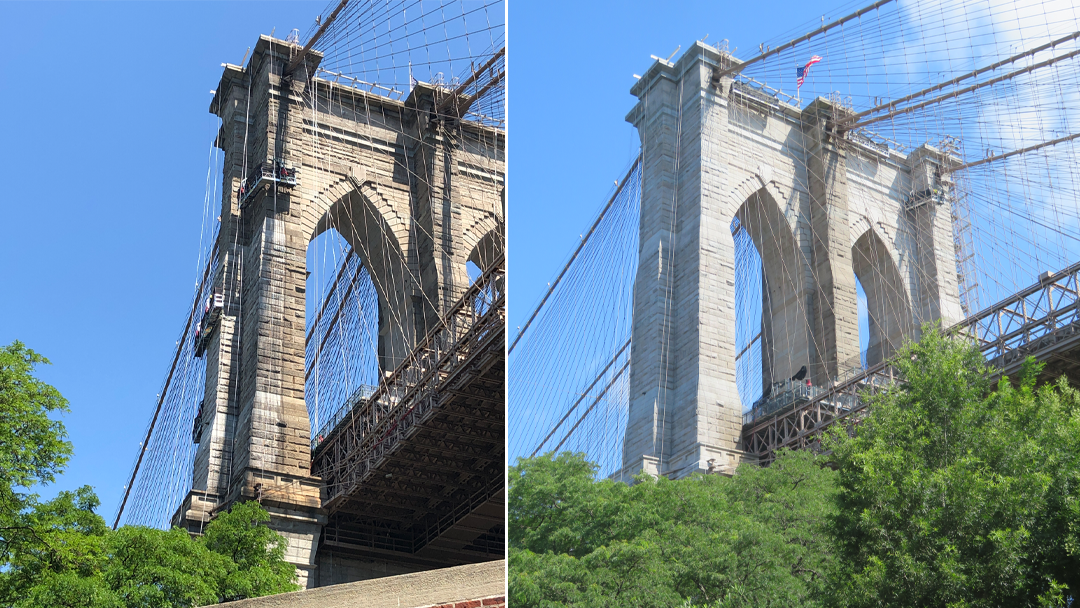
If you’re not testing, you’re guessing
When Ed FitzGerald, Senior Architectural Conservator with Jablonski Building Conservation (JBC), first arrived on site in 2019, he assessed conditions with two staff members from Pullman -- Jacqueline Bascetta, Project Director, and Charles Finch, Director of Operations. Before any cleaning could begin, they would need to go through several rounds of testing to make sure every product choice was just right for each of several stains.
“We needed a general cleaning of the granite, but there was also rust and paint splatter from when they painted the cables,” Bascetta said. “There was graffiti paint. There was efflorescence, but really it had calcified into stalactites.”
“Usually, the Brooklyn Bridge is packed person-to-person, but we pretty much had the bridge to ourselves.”
“We walked the sites together and picked areas that were typical representations on the bridge. Once we picked these areas out, we did all the chemical testing. They picked the best ones and then Pullman did the larger full-scale mockups that were about 100 square feet. We broke them up into four sections for several types they wanted to try. Ed and the JBC team did all the pretesting and cleaning programs.”
As the consultant on all stonework on the bridge, JBC’s FitzGerald was tasked with testing not only all the stain variables, but also the substrate variables.
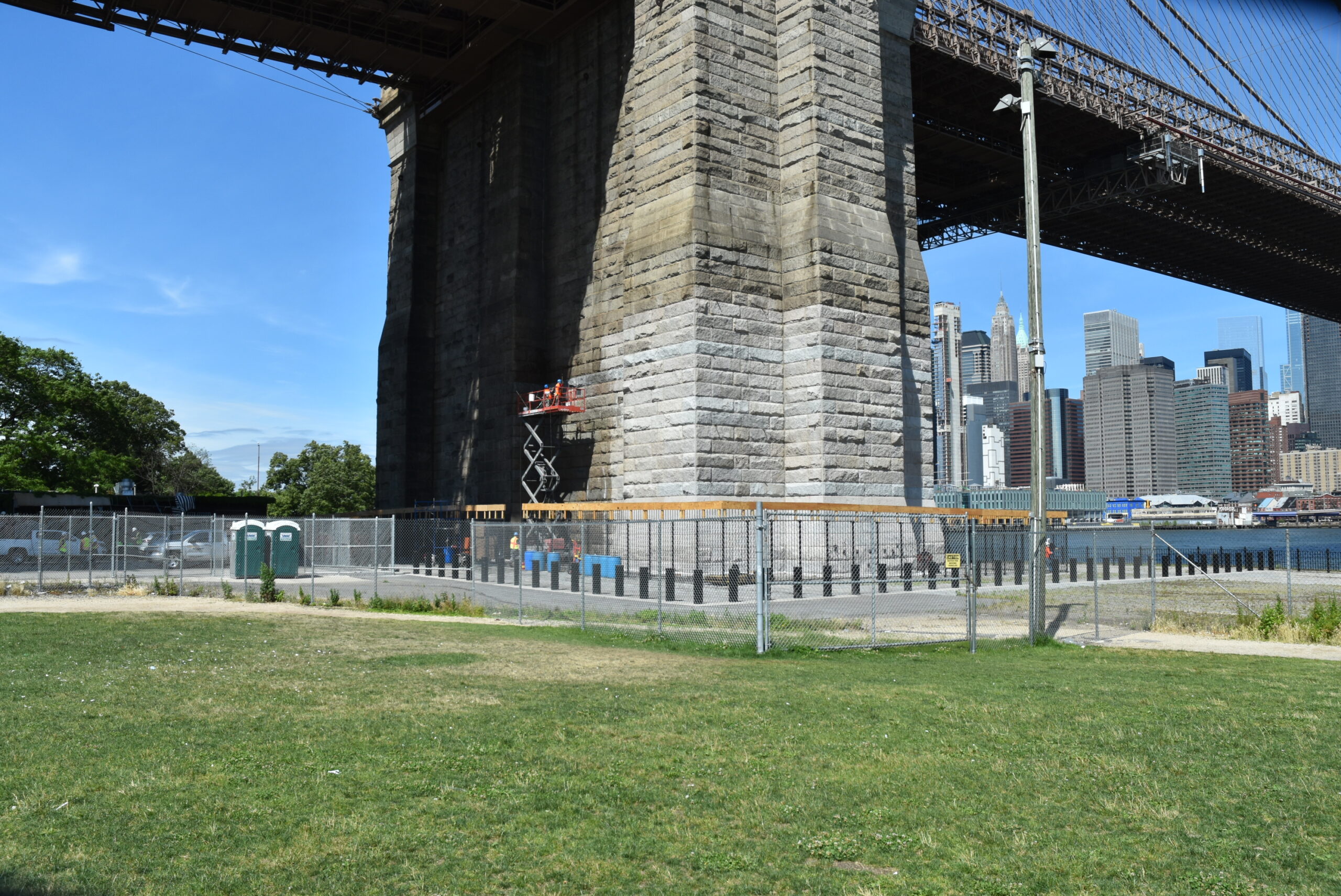
“There’s a dozen different types of granite used on the bridge,” FitzGerald said. “One of the most prominent ones is a pink granite from tiny Fox Island in Maine, which is no longer quarried. That’s its own challenge. There’s also pink granite from Connecticut, a black-flecked white granite that looks like chocolate chip ice cream, and even dolomitic limestones from upstate New York and beyond.”
The winner for the general cleaning of the mixed-granite surface? Heavy Duty Restoration Cleaner with variable dilution rates.
“We were originally approved at 1:6 dilution, but we wound up getting approvals to go to 1:4 or 1:5 depending on how intense the staining was,” Pullman’s Finch said. “Ed’s process was to start with the most diluted and then increase to get results that were satisfactory.”
FitzGerald said the project team liked Heavy Duty Restoration Cleaner for the general cleaning because of the sheer enormity of the towers and approaches, as well as the variety of soiling conditions throughout the bridge.
“People would be on TikTok saying, ‘Something’s different with the bridge, it looks so nice now.’ They recognized the change, but they had no idea what happened.”
“Because we found a dilution of Heavy Duty Restoration Cleaner that was effective, that provided us some flexibility,” he said. “We could increase or decrease the dilution to address soiling in specific locations.”
FitzGerald’s test panels also illuminated the best option to remove layers upon layers of paint.
“With any bridge with a mixture of stone and steel, there’s bridge painters,” FitzGerald said. “The guys that paint the steel always drip onto the masonry. I get it. It’s a tough job. So, there’s just decades of paint splatter at the base of the bridge that have accumulated from every time the bridge has ever been painted. We used Heavy Duty Paint Stripper for that.”
A structure as historically significant and publicly treasured as the Brooklyn Bridge deserved every precaution possible, said FitzGerald.
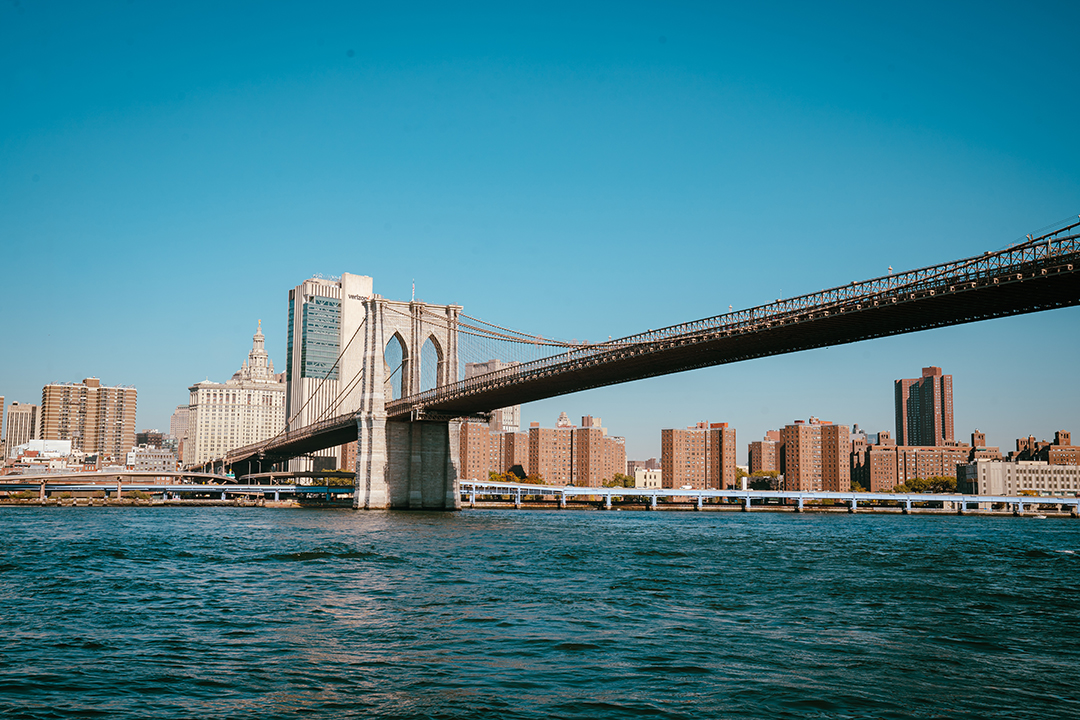
“It’s critically important to test before you go full speed on a historical structure like this one,” he said. “We tested multiple cleaners, concentrations and dwell times. Just scrolling the list, there’s probably 27 different test panels and 10 products, plus abrasive cleaning methods, and that’s just the tests to remove atmospheric soiling. It took our team weeks to test cleaners for all the different soiling types in multiple locations. And, as the project progressed and the heaviest layers of dirt and paint were removed, we uncovered still more soiling types that required testing before treatment. But all the testing was worth it. Pullman didn’t have to waste time and money on ineffective products and the conservators were happy that the gentlest cleaning methods were used.”
Because it was cleaned during peak Covid times, the bridge was unusually light on traffic when under construction
Protecting the East River
Brooklyn Bridge was not the first bridge-cleaning project for either Pullman or JBC, but this was no ordinary bridge.
“On another bridge we cleaned, we specifically opted for micro-abrasive cleaning, or sandblasting, because the sand can just fall into the water,” FitzGerald said. “On this project, they told us that’s not kosher. They didn’t want us to put anything in the water.”
To prevent anything from falling into the East River below, Pullman designed and installed an extensive containment system to capture all rinsewater. That system included a barge encircling the base of the Manhattan tower (the other tower is on land) with a flexible rubber membrane that formed a trough over to the margins. That membrane captured all wastewater and pumped it to the proper channels for disposal.

“Every single drop of chemical and rinsewater was captured through that containment system in the project,” FitzGerald said.
Additionally, the project team had to account for any overspray or mist, Bascetta said.
“We went through a couple of really intensive mockups to show the procedure was sound,” she said. “We wet the wall with a pressure washer and no chemicals. Once it was saturated, we came back with chemicals and dwell time. Then, we came back and rinsed the wall down with very low pressure so there’s no mist or overspray. We had people with litmus tests to catch any overspray and nothing showed up.”
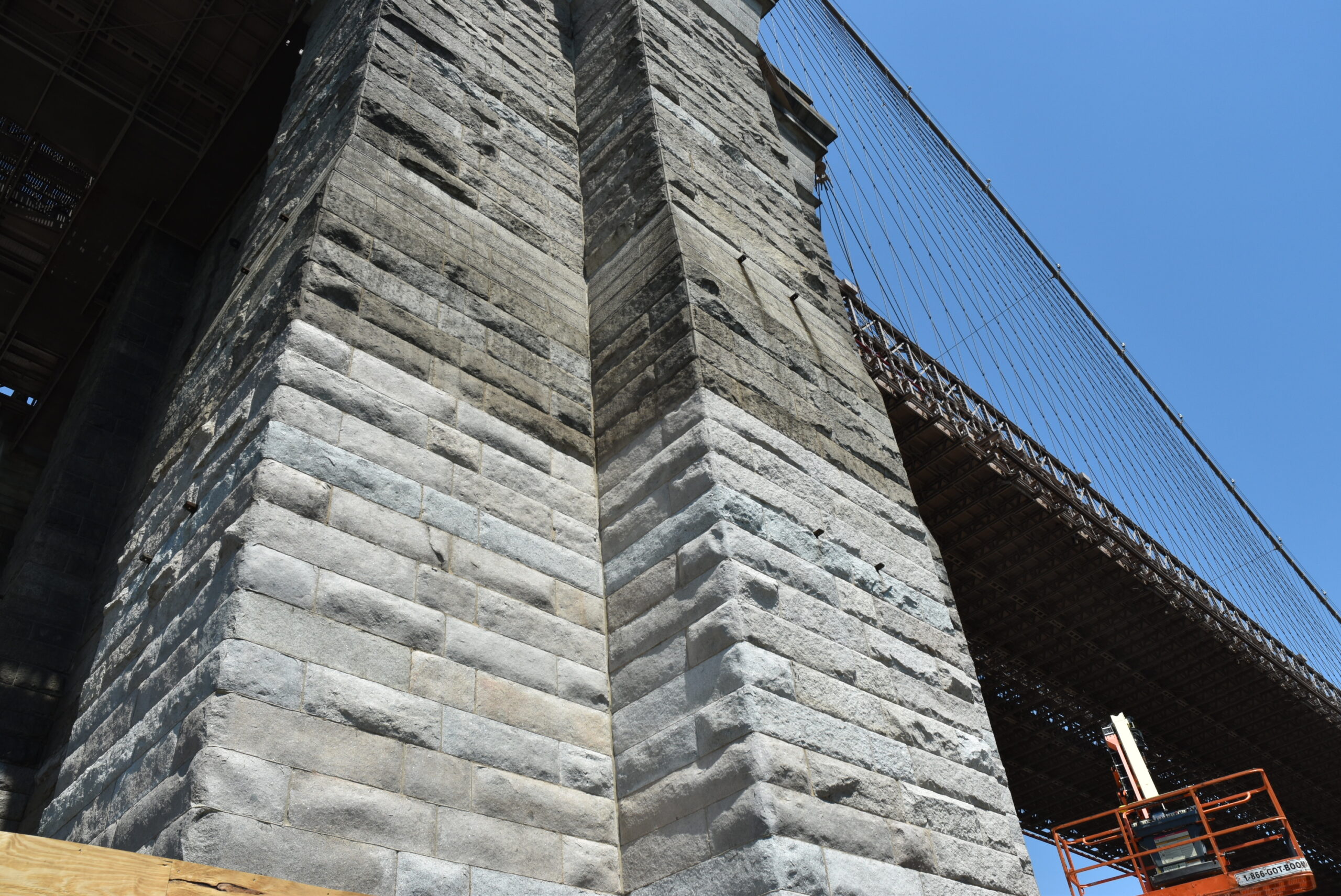
The (not-so) big reveal
With the test panel results in hand and the clear winners selected, cleaning work began in 2020 – first on the approaches, then the towers, and finally the balustrades. The cleaning portion of the full restoration finished up in 2023.
As FitzGerald watched Pullman’s crews remove decades’ worth of stains from the bridge, he was reminded of another New York City icon.
“There’s a cookie sold in New York City called the Black and White Cookie,” he said. “I always said the bridge towers looked like a Black and White Cookie while they were being cleaned, the transformation was so dramatic.”
The restoration won Project of the Year by the Women Builders Council

“We found some New York Times articles about the bridge last being cleaned in the 1950s, and everyone was in awe back then that the bridge went from a dull, grayish-brown to a pink granite. It was the same thing this time,” FitzGerald says.
One thing that was different about this cleaning was its visibility to the public, which ultimately was a bit of a disappointment for some project team members who were excited for their work to be seen on such a recognizable structure.
“This cleaning was such a cool process and so visible,” said Finch. “But really nobody saw it at the time because it was during the height of Covid. Usually, the Brooklyn Bridge is packed person-to-person, but we pretty much had the bridge to ourselves.”
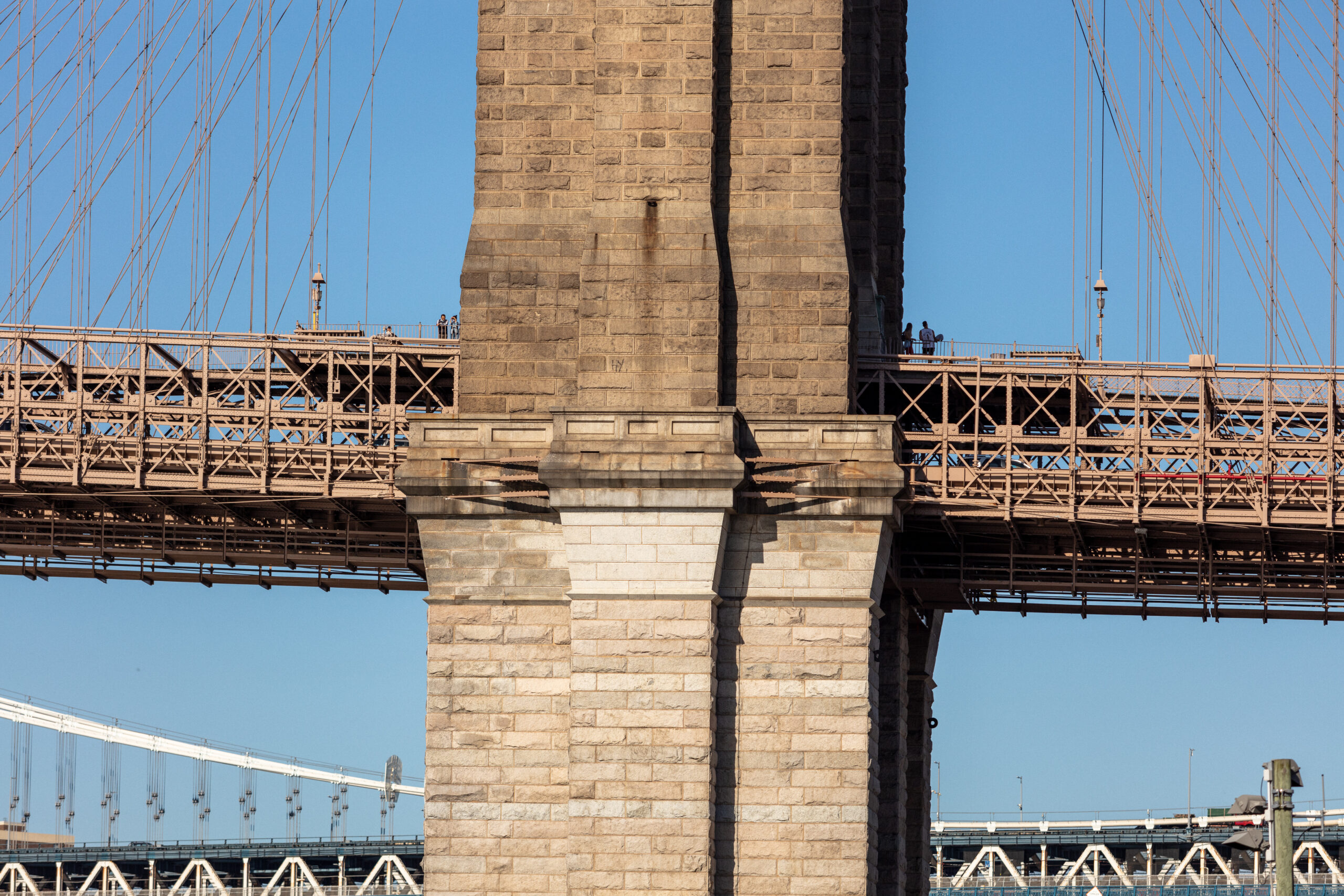
“It was really cool to see these bands of different colors appear as we cleaned it,” he added.
Finch and Bascetta both were amused to see small bits of recognition from New Yorkers who could tell something was different but couldn’t quite pinpoint what.
“People would be on TikTok saying, ‘Something’s different with the bridge, it looks so nice now.’ They recognized the change, but they had no idea what happened,” Finch said. “Someone on TikTok said, ‘When did the Brooklyn Bridge get so beige?’ That was hilarious. It’s so cool to see the acknowledgement.”
Beyond TikTok, the Brooklyn Bridge restoration has won multiple industry awards and accolades, including Project of the Year from the Women Builders Council.
![]()
